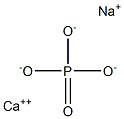
Гlass wool
- английское имяFiber Glass Wool
- CAS №65997-17-3
- CBNumberCB8106092
- ФормулаCaNaO4P
- мольный вес158.039131
- EINECS266-046-0
- номер MDLMFCD00147032
- файл Mol65997-17-3.mol
| Температура плавления | 680 °C |
| Температура кипения | 1000 °C |
| плотность | 1.1 g/mL at 25 °C(lit.) |
| Плотность накопления | 20-160kg/m3 |
| температура хранения | 15-25°C |
| форма | Fiber (particle with a lengthto-diameter aspect ratio of 3 to 1 or greater). |
| РН | 9-11 (100g/l, H2O, 20℃)(slurry) |
| Стабильность | Stable. |
| Непрямые добавки, используемые в веществах, контактирующих с пищевыми продуктами | SODIUM ZINC POTASSIUM POLYPHOSPHATE |
| FDA 21 CFR | 177.2410 |
| Рейтинг продуктов питания EWG | 1 |
| FDA UNII | 3JRB8A35M0 |
| Система регистрации веществ EPA | Glass, oxide, chemicals (65997-17-3) |
| UNSPSC Code | 41122409 |
| NACRES | SB.54 |
| Коды опасности | Xi,T | |||||||||
| Заявления о рисках | 36/37/38-49 | |||||||||
| Заявления о безопасности | 26-36-24/25-22-45-53 | |||||||||
| WGK Германия | 3 | |||||||||
| RTECS | LK3651000 | |||||||||
| кода HS | 7019 90 00 | |||||||||
| NFPA 704: |
|
рисовальное письмо(GHS)
-
рисовальное письмо(GHS)

-
сигнальный язык
опасность
-
вредная бумага
H350i:Может вызывать раковые заболевания при вдыхании.
-
оператор предупредительных мер
P201:Беречь от тепла, горячих поверхностей, искр, открытого огня и других источников воспламенения. Не курить.
P202:Перед использованием ознакомиться с инструкциями по технике безопасности.
P280:Использовать перчатки/ средства защиты глаз/ лица.
P308+P313:ПРИ подозрении на возможность воздействия обратиться за медицинской помощью.
P405:Хранить в недоступном для посторонних месте.
P501:Удалить содержимое/ контейнер на утвержденных станциях утилизации отходов.
Гlass wool химические свойства, назначение, производство
Химические свойства
generally sold as a wool-like materialИспользование
Thermal, acoustic, and electrical insulation (coarse fibers in bats or sheets); decorative and utility fabrics such as drapes, curtains, table linen, carpet backing, tenting, etc.; tire cord as belt between tread and carcass; filter medium; reinforced plastics; light transmission for communication signals; reinforcement of cement products for construction use.Определение
Generic name for a manufactured fiber in which the fiber-forming substance is glass (Federal Trade Commission). Noncombustible.Общее описание
Silica is a naturally occurring material in minerals, flint and in some plants in crystalline phase. Silica used in industries is in synthetic form. Surface area, pore volume, pore size and particle size are independently controllable to some extent. The crystalline silica may be classified based on atmospheric pressure as:a. Quartz = 1143K
b. Tridymite 1143 - 1743K
c. Cristobalite = 1743, over 1973K it forms amorphous vitreous silica glass.
Опасность
A possible carcinogen.Угроза здоровью
Glass fibers cause skin, eye, and upper respiratory tract irritation; although earlier classified by IARC to be a Group 2B carcinogen, possibly carcinogenic to humans, more recent evaluations indicate the human risk, if any, to be minimal.Промышленное использование
Fine flexible glass fibers made from glass are used for heat and sound insulation, fireproof textiles,acid-resistant fabrics, retainer mats for storage batteries, panel board, filters, and electrical insulating tape, cloth, and rope. Molten glass strings out easily into threadlike strands, and this spun glass was early used for ornamentalpurposes but the first long fibers of fairly uniformdiameter were made in England by spinningordinary molten glass on revolving drums.The standard glass fiber used in glass-reinforced plastics is a borosilicate type known asE-glass.Glass cloth of plain weave of either continuous fiber or staple fiber is much used forlaminated plastics.
Источник
Kaolin and Ground silica are the major batch components in the production of fiberglassВозможный контакт
The major uses of fibrous glass are in thermal, electrical, and acoustical insulation; weatherproof ing, plastic reinforcement; filtration media; and in structural and textile materials.Утилизация отходов
Fibrous glass waste and scrap should be collected and disposed of in a manner which will minimize its dispersal into the atmosphere. Emphasis should be placed on covering waste containers; proper stor age of materials; and collection of fibrous glass dust. Clean-up of fibrous glass dust should be performed using vacuum cleaners or wet cleaning methods. Dry sweeping should not be performed.Гlass wool запасные части и сырье
сырьё
1of2
запасной предмет
1of3
Гlass wool поставщик
| поставщик | телефон | страна | номенклатура продукции | благоприятные условия |
|---|---|---|---|---|
| +8615530197691 | China | 105 | 58 | |
| +86-16264648883 +86-16264648883 |
China | 3712 | 58 | |
| +86-0371-55170693 +86-19937530512 |
China | 21632 | 55 | |
| +86-0371-86658258 +8613203830695 |
China | 29871 | 58 | |
| 18871490254 | CHINA | 28172 | 58 | |
| 86-13657291602 | CHINA | 22963 | 58 | |
| +86-023-6139-8061 +86-86-13650506873 |
China | 39894 | 58 | |
| +8618530059196 | China | 11805 | 58 | |
| +8615255079626 | China | 23541 | 58 | |
| +86-0535-6622355 +8613606382686 |
China | 79 | 58 |